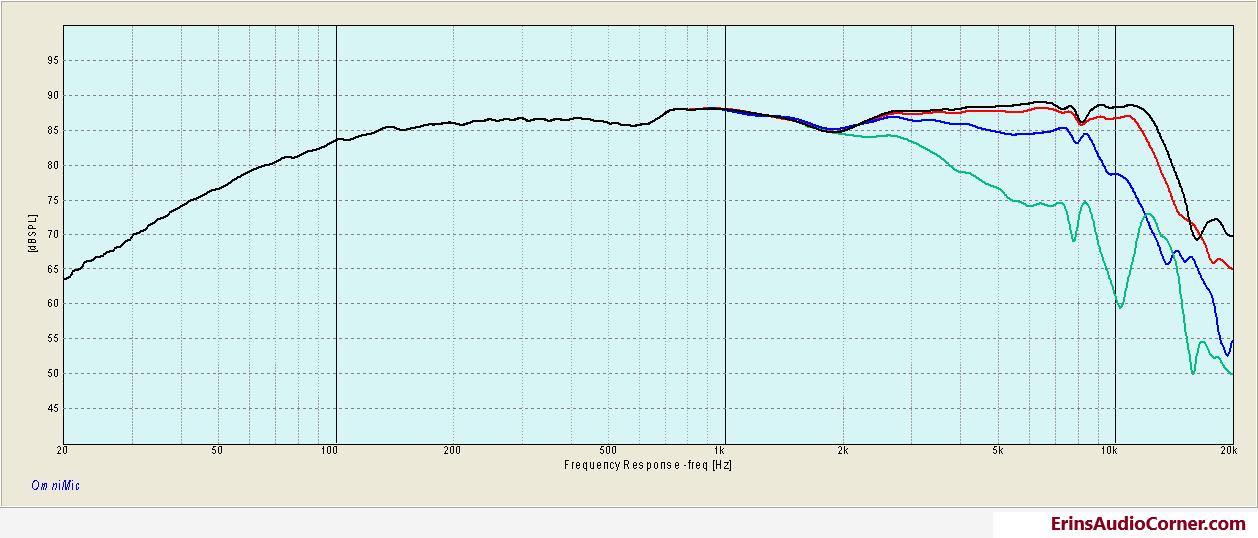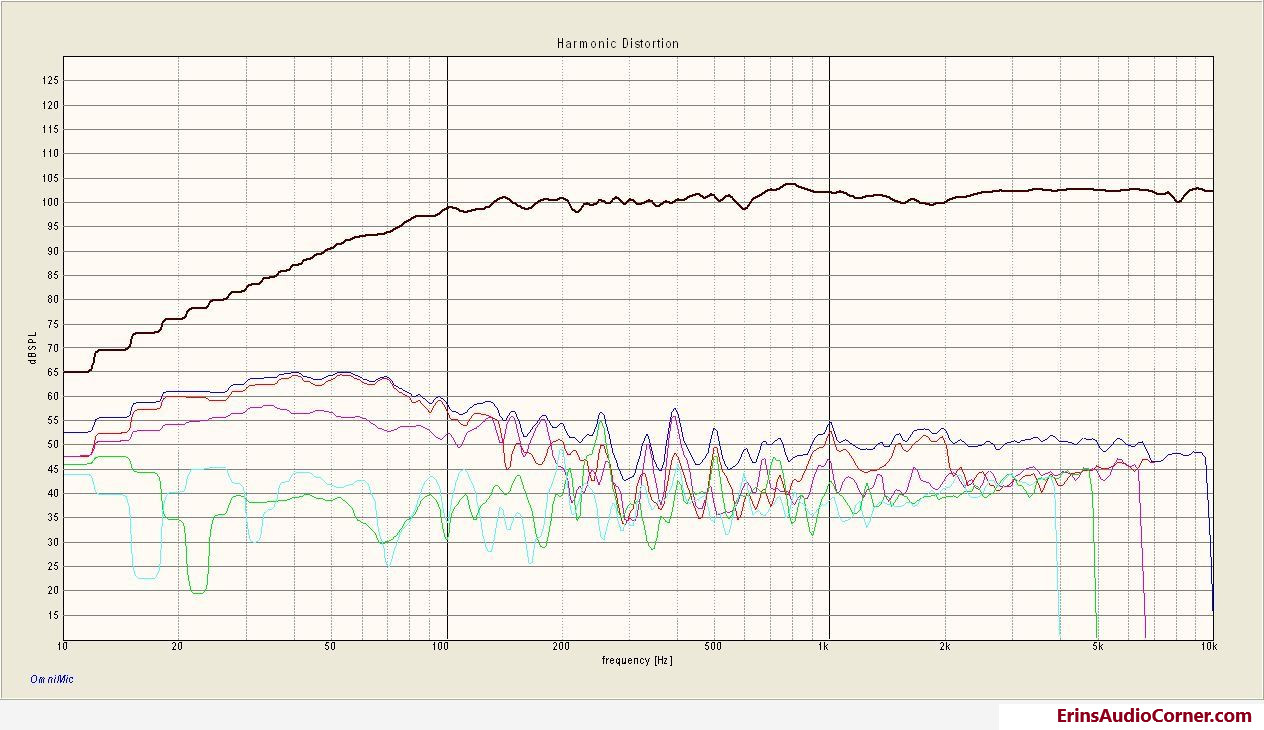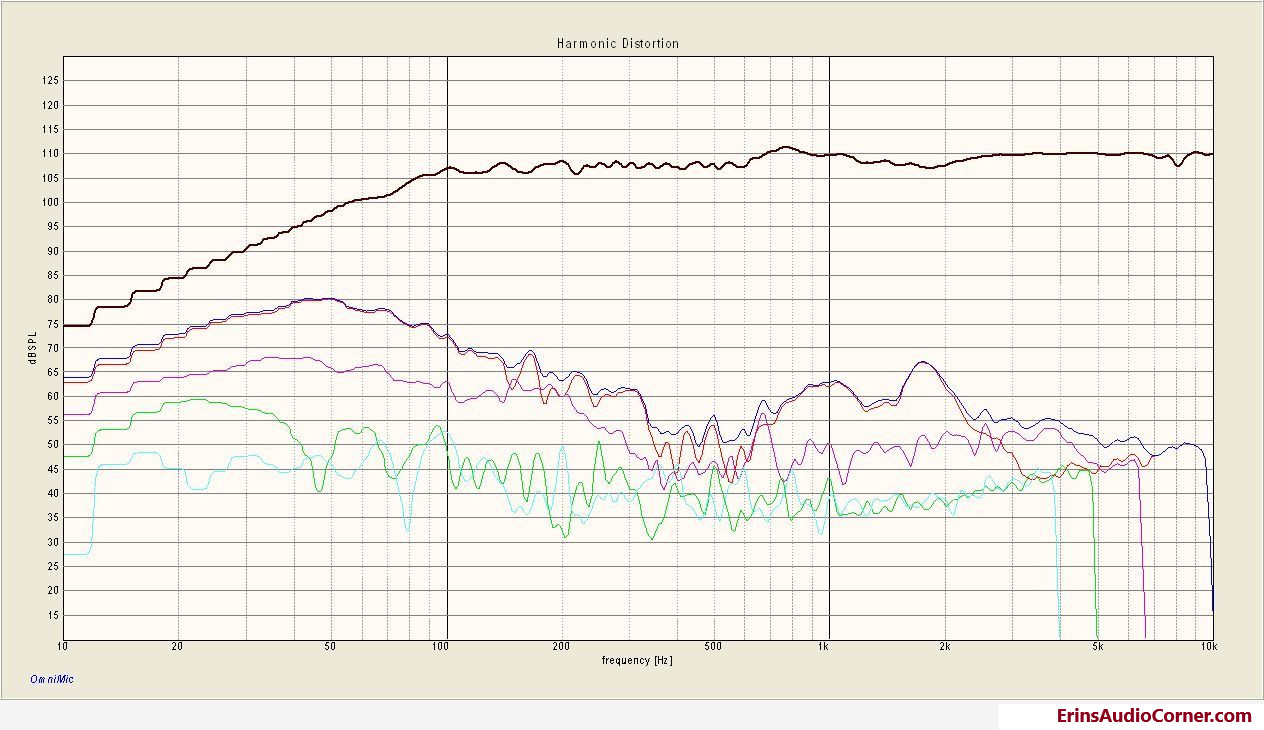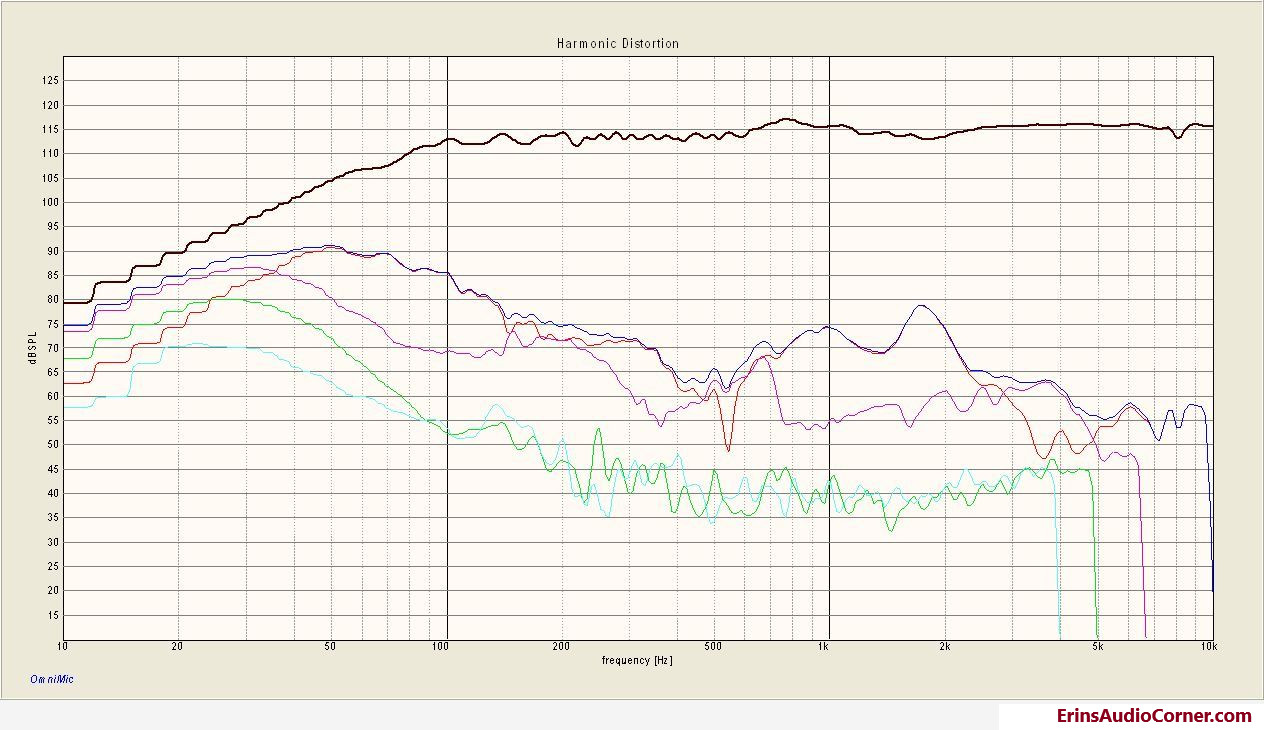

Up for test is the venerable Scan-Speak Revelator 12M/4631G-00 4.5″ Midrange.
Some refer to this as one of (if not the) best pure midrange available. It is used in many DIY designs as well as manufacturered loudspeakers.
Let’s get to it.
Small Signal Parameters and Impedance
Results as measured via Dayton’s DATs measurement tool. Which is a very little handy tool to have. 😉
- f(s)= 84.11 Hz
- R(e)= 3.68 Ohms
- Z(max)= 35.95 Ohms
- Q(ms)= 5.242
- Q(es)= 0.598
- Q(ts)= 0.536
- V(as)= 2.159 liters (0.076 cubic feet)
- L(e)= 0.32 mH
- n(0)= 0.20 %
- SPL= 85.21 1W/1m
- M(ms)= 6.18 grams
- C(ms)= 0.58 mm/N
- BL= 4.48

Frequency Response
Frequency Response and the following Harmonic Distortion measurements were taken using Dayton’s OmniMic measurement system.
The frequency response measurements below are on-axis (0 degrees) and off-axis (15, 30, 60 degrees), measured at 2.83v/1m.
- Black = 0 degrees
- Red = 15
- Blue = 30
- Green = 60

Harmonic Distortion Testing
Legend:
- Maroon – Fundamental
- Blue – THD
- Red – 2nd Order Distortion
- Pink – 3rd Order Distortion
- Green – 4th order
- Teal – 5th order
Testing done in the nearfield to emulate 90dB, 96dB, and 102dB output at 1 meter.



Impressions/Results
The frequency response linearity is really quite nice, maintaining a fairly flat profile out to 10khz. The average sensitivity at 2.83v/1m is about 88dB and the response on-axis fluctuates only by about -3dB with no severe cone breakup issues outside the typical passband of beaming (approximately 2khz). The off-axis response is very nice, maintaining a smooth transition much further than anyone is likely to cross this driver. At 30 degrees off-axis at 5kHz the output is down about 4dB and at 60 degrees it is down about 12dB.
At 102dB output, distortion reaches 3% THD below ~120hz. Distortion dips below 1% THD at about 220hz and dips down to 0.50% at about 400hz before a rise in THD begins around 700hz, reaching a maximum THD level of 1.80% at approximately 1.73kHz.
End
If you just like what you see here and want to help me keep it going, there’s a Paypal Contribute button at the bottom of each page. Just provide what you can. Every little bit is truly appreciated.
You can also join my Facebook and YouTube pages via the links at the bottom of the page if you’d like to follow along with updates.
Thanks!

